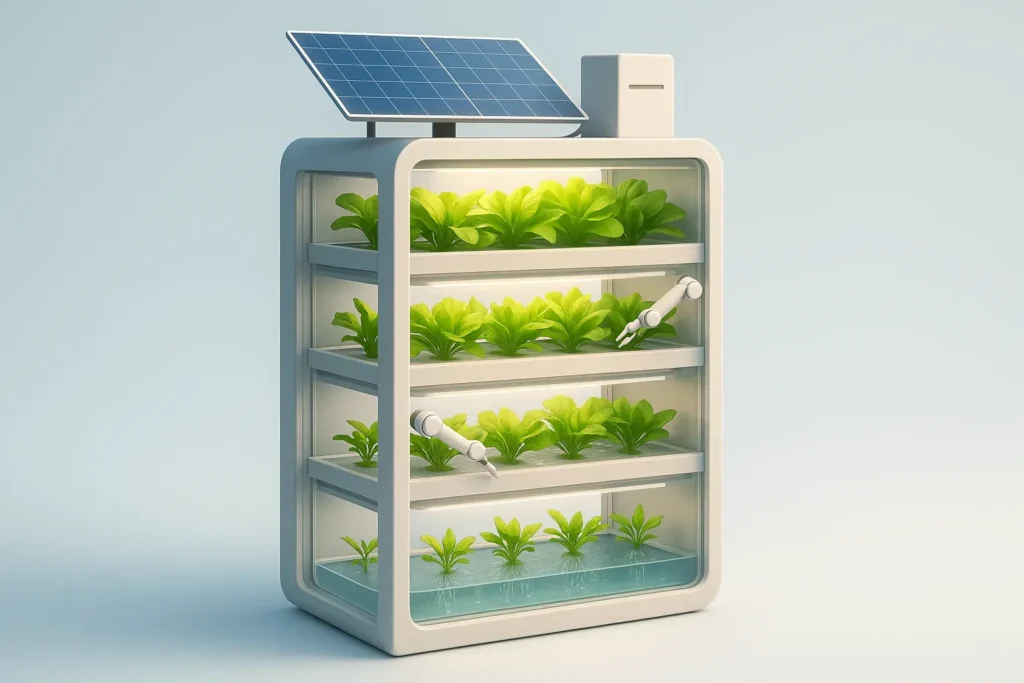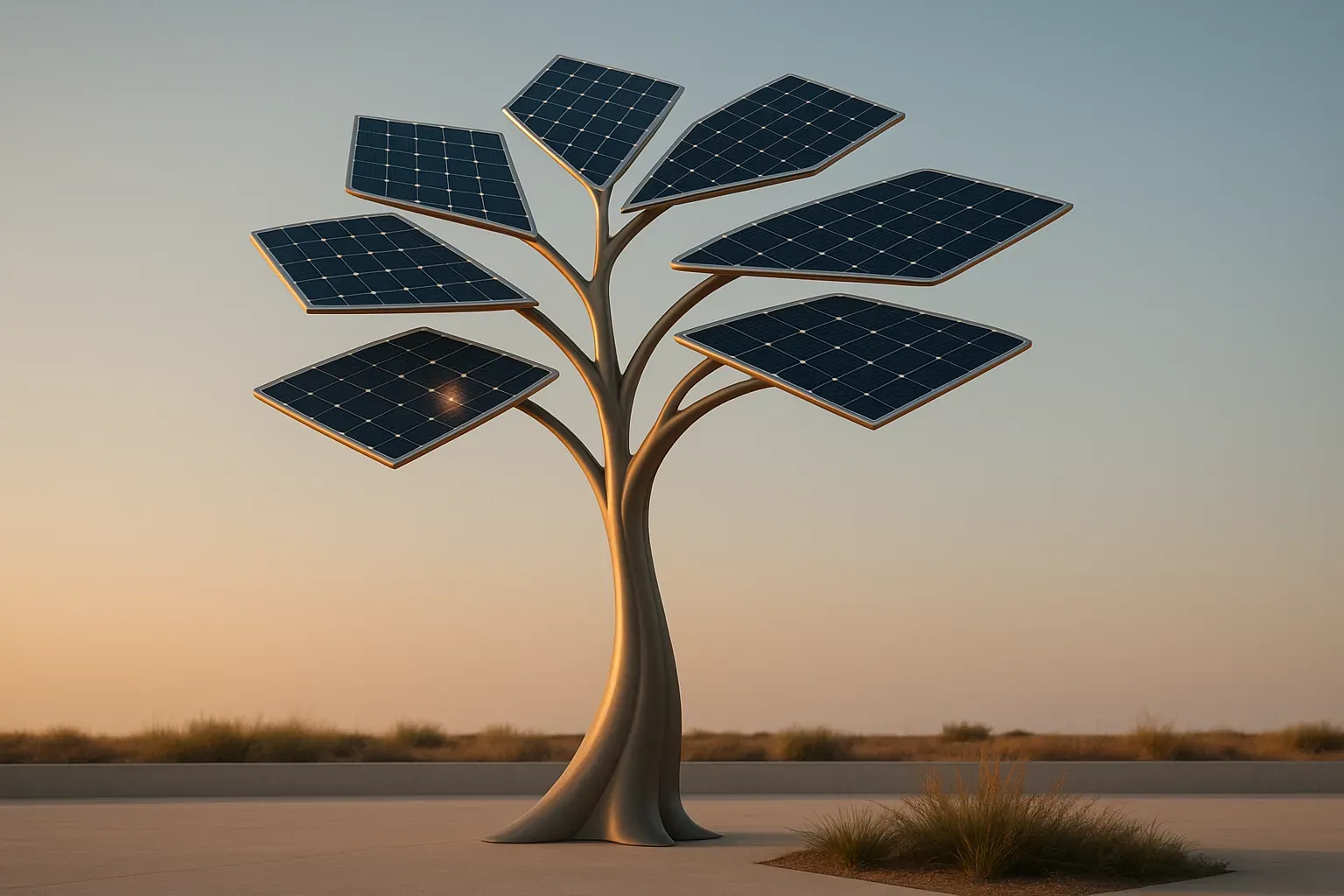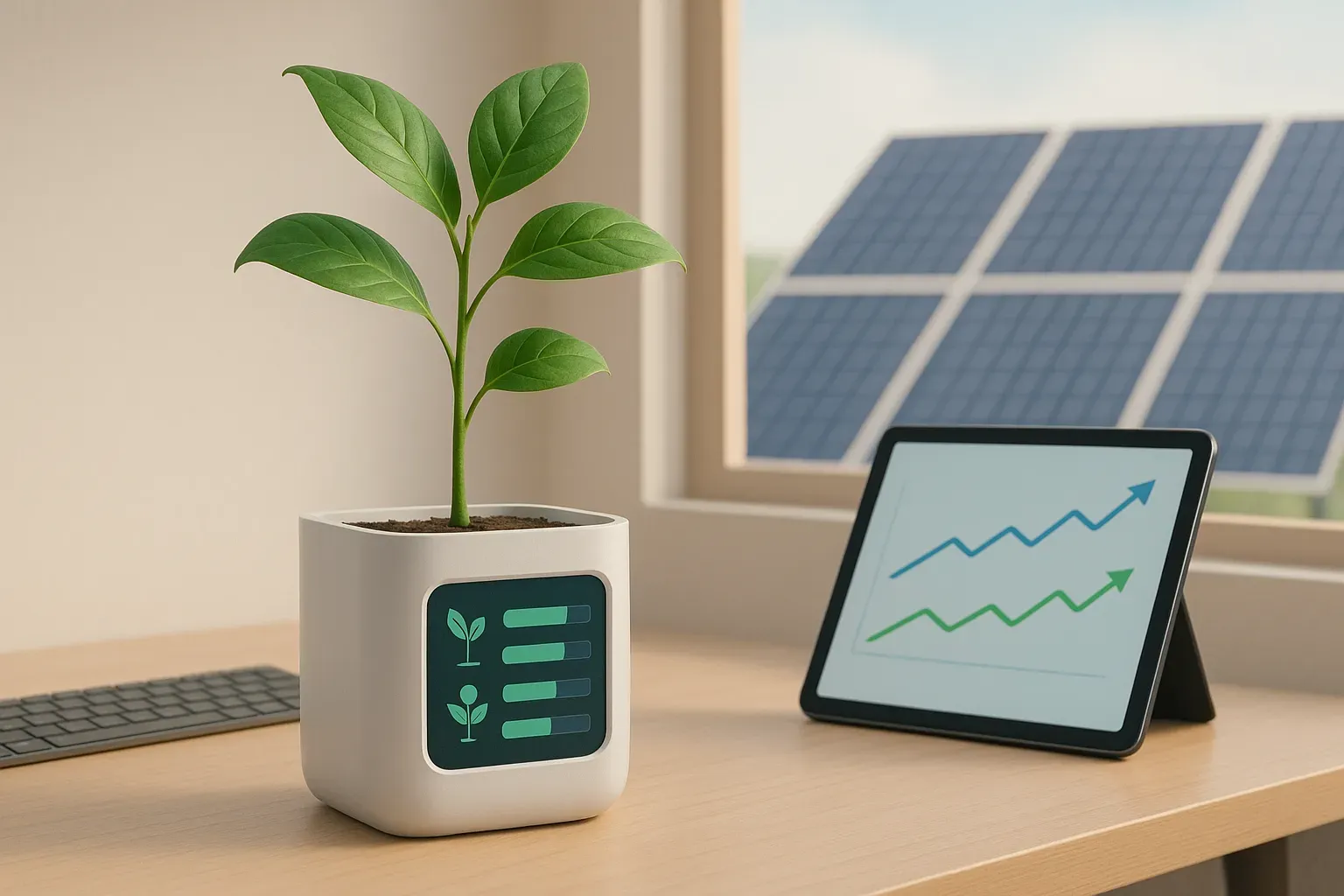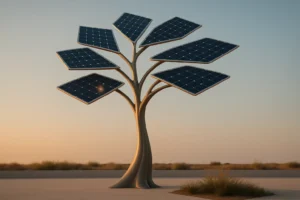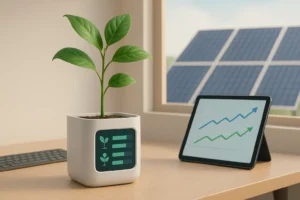Sustainable technology is evolving rapidly across sectors from energy storage to computing, as experts forecast transformative innovations that could reshape our relationship with the environment. From decentralized energy systems to self-recycling software, these emerging technologies promise to address critical environmental challenges while creating new economic opportunities. Industry specialists point to breakthroughs in battery recycling and carbon capture as particularly promising developments that could accelerate the transition to a more sustainable future.
- Green Hydrogen Democratizes Rural Clean Energy Access
- Buildings Become Energy Producers Through HVAC Innovation
- Sustainable Computing Reimagines Data Processing Fundamentals
- Solid-State Batteries Transform Energy Storage Capacity
- Advanced Battery Tech Makes EVs Practical
- Modular Phones Combat Electronic Waste Crisis
- Decentralized Energy Storage Empowers Clean Communities
- Carbon-Aware Cloud Computing Automates Sustainable Decisions
- Energy-Efficient AI Infrastructure Reduces Carbon Footprint
- Durable Recyclable Packaging Eliminates Supply Chain Waste
- Adaptive Edge Computing Revolutionizes Educational Technology
- Self-Recycling Software Reduces Digital Environmental Impact
- Battery Recycling Addresses Critical Material Shortages
- Compostable Packaging Elevates Premium Consumer Experience
- Practical Carbon Capture Creates Valuable New Products
- Closed-Loop Flooring Creates Zero-Waste Design Options
- Energy-Efficient Data Centers Reuse Heat Effectively
Green Hydrogen Democratizes Rural Clean Energy Access
I hope to see scalable green hydrogen production accessible to agricultural energy systems. Fossil fuels remain the hidden engine of many rural operations despite visible sustainability efforts. Affordable hydrogen could power machinery, transport, and storage without carbon emissions. It would democratize clean energy access beyond urban infrastructure and industrial giants. That shift would make sustainability inclusive rather than elitist.
I’m eager because renewable energy must extend to rural economies for genuine global impact. Farmers should not bear disproportionate costs for ethical choices. Green hydrogen offers energy independence without sacrificing climate integrity. It promises a cleaner, more equitable energy ecosystem grounded in resilience. For agriculture, it could represent emancipation from carbon dependency once and for all.

Buildings Become Energy Producers Through HVAC Innovation
We are moving toward an era where buildings should produce more energy than they consume. I want to see HVAC systems that can recycle and store the heat or cool air they generate for future use. This circular approach can significantly reduce energy waste. Imagine a heat pump that captures excess warmth from one area and transfers it to another location where it is needed. Some commercial systems already use this method, but home adoption remains slow.
Increasing awareness and offering incentives can encourage more people to consider these solutions. Encouraging developers to design homes with regenerative HVAC systems will make buildings far more efficient. True sustainability is not only about using less energy but also about reusing it intelligently. By thinking in cycles rather than one-time use, we can create homes that support both comfort and environmental responsibility while reducing long-term energy costs.

Sustainable Computing Reimagines Data Processing Fundamentals
I’d like to see major progress in sustainable computing — specifically, the development of low-energy data processing and storage systems. As our world becomes increasingly data-driven, the environmental cost of training AI models and maintaining data centers is immense. The industry has done well to optimize hardware and cooling systems, but true sustainability will come from rethinking how data is handled at the algorithmic and operational levels—making efficiency a design principle, not an afterthought.
I see firsthand how even small improvements in energy efficiency can scale into significant environmental benefits. I’m eager for this innovation not just to reduce emissions, but to make sustainable data operations the norm — so that every company relying on AI and data can grow responsibly, without trading progress for planet.

Solid-State Batteries Transform Energy Storage Capacity
I’m most excited about advances in solid-state battery technology. Today’s lithium-ion cells are the backbone of electric cars and our devices, but they still rely on flammable liquid electrolytes and have limited energy density. Solid-state designs replace that liquid with a ceramic or polymer electrolyte, which makes them safer and dramatically increases storage capacity and charging speed. When these batteries become commercially viable, we’ll see electric vehicles with 800-1000 km ranges and grid-scale storage systems that can bank surplus wind and solar power overnight. That combination could accelerate the decarbonization of transport and make renewable energy much more practical.

Advanced Battery Tech Makes EVs Practical
As the owner of a legal tech company and an EV driver, I’m most excited about advancements in battery technology — specifically, innovations that enable faster charging and longer range without sacrificing sustainability or battery life. Right now, one of the biggest friction points in long-range EV travel is the combination of charging time and infrastructure reliability. Improvements in solid-state batteries or ultra-fast-charging lithium alternatives could fundamentally change that equation, making electric travel as convenient as refueling a gas car.
From a broader perspective, that kind of leap doesn’t just benefit consumers — it reshapes how we think about energy networks, logistics, and even urban planning. As someone who spends his days building technology that streamlines complex processes, I see the same parallel here: better battery tech simplifies the user experience and accelerates adoption. I’m eager for that future because it represents progress that’s both practical and scalable — sustainability that fits seamlessly into everyday life.

Modular Phones Combat Electronic Waste Crisis
I’m an Industrial Designer and think about this daily. I am looking forward to modular cellphones becoming more popular. Our current model is so wasteful. Oftentimes, it’s a camera or a screen that breaks and “totals” the phone. I find this incredibly frustrating as reducing waste is a passion of mine as a designer. Cellphone waste is a huge issue.
It may sound intimidating to incorporate, but you don’t need to be a tech expert to make this concept work.
When you have an issue with your car, you don’t throw it away and buy a new one. You take it to a dealership who changes out a single part. It’s even a similar user journey with desktop computers.
Building out parts that are more important for you is also a great way to gain more market share. Not everyone finds that crazy new zoom lens with portrait settings is important to their life. Clients will get to build their own phones for their needs and budget.
As phones become so expensive they rival the sticker prices of desktop computers, the first major tech company to incorporate this modular phone sales model will make a huge killing in my opinion.

Decentralized Energy Storage Empowers Clean Communities
The sustainable technology I’m most eager to see take off is large-scale, decentralized energy storage — something that finally solves the gap between renewable generation and consistent supply. Solar and wind have made massive progress, but we still face the same core challenge: the sun doesn’t shine at night, and the wind doesn’t always blow. Without scalable storage, we’re still forced to lean on fossil-based backups when the grid gets unstable.
What excites me about this next frontier isn’t just the tech — it’s the potential shift in power dynamics (literally and economically). Imagine neighborhoods storing and sharing their own clean energy through smart microgrids. Small businesses in developing countries could power themselves reliably without waiting for central infrastructure to catch up. Cities could operate with energy independence that’s both clean and resilient.
In my work across growth strategy and sustainability-focused brands, I’ve seen how fast adoption accelerates when tech feels accessible. The biggest leaps forward don’t come from the most advanced hardware — they come when ordinary people can plug into the system without friction. Decentralized energy storage could make clean energy participation as normal as paying your phone bill.
The next wave won’t just be about innovation — it’ll be about integration. Pair that storage tech with AI-powered energy management, and we could optimize grid flow in real time, reduce waste, and empower consumers to play an active role in sustainability. That’s the kind of progress that doesn’t just reduce emissions — it reshapes how communities function.
I’m eager for this because it’s not a distant dream — it’s within reach. We already have the components. What we need now is the right mix of vision, policy, and public trust to connect them. When that happens, sustainable energy stops being an aspiration and starts being the default.

Carbon-Aware Cloud Computing Automates Sustainable Decisions
Carbon-aware orchestration as a default in every cloud and CI pipeline. I want build, batch, and training jobs to auto-choose the cleanest region, the greenest hour, and the smallest model or instance that meets the target, without an engineer lifting a finger.
Give every workflow three guardrails: a deadline, a floor for accuracy or SLO, and a carbon budget. The runtime should shift non-urgent work to low-intensity windows, co-locate heat where reuse is possible, and present a single, straightforward metric to teams: accuracy per watt.
This unlocks real cuts in emissions while saving money because right-sized jobs and smarter timing reduce waste. I am eager for this because it turns sustainability from a side project into the path of least resistance, so it sticks even on busy weeks.

Energy-Efficient AI Infrastructure Reduces Carbon Footprint
In my opinion, the next big thing in sustainable technology is energy-efficient AI infrastructure, especially in AI data centers. Since I work closely with software and AI systems, I can see the compute demand of modern AI models is rising significantly. The hidden environmental cost behind the power consumption of data centers is growing rapidly.
I often think about how AI is transforming every industry and how this transformation will impact sustainability. So, I am looking for innovations that will make computation efficient both at the algorithm and hardware level. For instance, I am expecting innovation in neuromorphic chips, liquid cooling, and adaptive load balancing driven by renewable energy availability.
A few years from now, we will see AI models that scale intelligently, not just faster, while reducing their carbon impact and bringing more accuracy in the long run.

Durable Recyclable Packaging Eliminates Supply Chain Waste
I’m hoping for mainstream adoption of low-energy, closed-loop packaging films that can be recycled without industrial sorting. Through SourcingXpro, I’ve sourced thousands of custom packages, and the waste from single-use plastics is the quiet cost nobody sees on an invoice. Clients want “eco” without trading durability, but current options either compost too slowly or tear too easily. A material that survives shipping yet re-enters production without complex processing would change the math. It would let brands cut waste without greenwashing and reduce a hidden cost in the supply chain. Sustainability moves fastest when it doesn’t demand a quality sacrifice.

Adaptive Edge Computing Revolutionizes Educational Technology
A sustainable technology I’m eager to see grow is energy-adaptive edge computing for education platforms. In other words, these are systems that automatically adjust processing to meet the real demand. If student use declines, energy use declines — no wasted energy, except for server farms that leverage a reduced energy demand.
This is important because digital education is transformative; however, it still has a carbon footprint. If we can reduce energy waste — even at 20-30% — that is a meaningful reduction. It is no longer simply ethical, but rather it is becoming operationalized.
The ripple effect is exciting too. If we reduce energy use, we can also be bolder in our exploration of immersive learning, interactive simulations, real-time analytics, and adaptive lessons that humanize education, rather than removing the human experience.
What I would like to see is a change in the mindset of sustainability embedded in the blueprint of educational technology, rather than as an afterthought. If the edtech sphere embraces such a change, we can expand equitable, accessible education and protect the planet at the same time.

Self-Recycling Software Reduces Digital Environmental Impact
I am excited for technology self-recycling software systems applications that manage their own sustainability. Apps that can automatically monitor their own performance, detect wasteful processes, and clean up unused data or code to save storage and energy.
Data has quietly become one of our biggest problems because every app and system we use usually generates a huge amount of data, like files, logs, backups, and more. Hence, developers need to spend hours cleaning and optimizing software just to keep things running efficiently.
That’s why I am excited about the idea of self-recycling software systems. Imagine if apps could automatically detect redundant data, rewrite slow code, and shut down unused infrastructure using AI. These can be a big support to every organization as they help to reduce operational costs and also reduce the digital footprint.
Overall, it will lead to smart computing where every software will optimize itself on its own and contribute towards making technology truly sustainable and smarter.

Battery Recycling Addresses Critical Material Shortages
I’d love to see real progress in battery recycling technology. Right now, we’re building an electrified future on lithium, cobalt, and nickel, but most spent batteries still end up as waste. If we could recover those materials efficiently at scale, it would cut down on mining, reduce supply chain risk, and make EVs and renewable storage genuinely more sustainable.
I’m eager for it because demand for batteries is only going up — not just for cars, but for homes, grids, and devices. Without smarter recycling, we’re solving one problem (emissions) while creating another (resource depletion). A breakthrough here would give us cleaner growth without the hidden costs.

Compostable Packaging Elevates Premium Consumer Experience
I believe biodegradable packaging made from mycelium or algae should become more popular in the market. The amount of packaging we use for snacks, laundry pods, and ginger shots becomes surprising when we consider how small each item is. I would make the switch immediately if someone developed an affordable sustainable packaging solution that maintains premium quality.
The goal of waste reduction stands as the main objective, but there are additional benefits to consider. The experience of unwrapping a lovely item that can be composted at home creates an exciting moment for guests. The relaxation experience continues into the future because the product will decompose harmlessly after customers leave.

Practical Carbon Capture Creates Valuable New Products
The development of affordable carbon capture technology, which serves as more than a public relations strategy for oil companies, remains my top priority. The climate technology client I worked with showed me how to transform captured CO2 into practical products, which left a lasting impression on me. The technology has the potential to transform emissions into valuable assets when it receives appropriate commercial development.
Why am I eager? The current net zero plans with their unproven future solutions have exhausted me. The technology demonstrates real potential to make a meaningful impact rather than serving as a temporary delay mechanism.

Closed-Loop Flooring Creates Zero-Waste Design Options
One sustainable technology I’d love to see evolve further is fully closed-loop flooring production, where every plank, tile, or carpet can be easily disassembled and recycled back into new flooring without quality loss. Right now, even “recyclable” products often end up in landfills because of adhesives, finishes, or composite layers that make separation difficult.
A truly circular system would drastically reduce waste, cut carbon emissions, and make sustainable design more accessible without sacrificing performance or aesthetics. I’m eager for this innovation because it would allow designers and homeowners to make eco-conscious choices without compromise, beautiful, durable floors that don’t create future waste.

Energy-Efficient Data Centers Reuse Heat Effectively
The development of scalable energy-efficient data centers with liquid cooling and heat reuse systems needs urgent advancement. Our cloud deployment operations face actual expenses and environmental effects from compute resources which become more significant when clients execute analytics and AI workloads.
The availability of environmentally friendly computing solutions that maintain performance levels enables architecture teams to select sustainable options for their projects. The goal goes beyond following current trends because it involves uniting sustainability with performance and cost-effectiveness throughout the long term.


